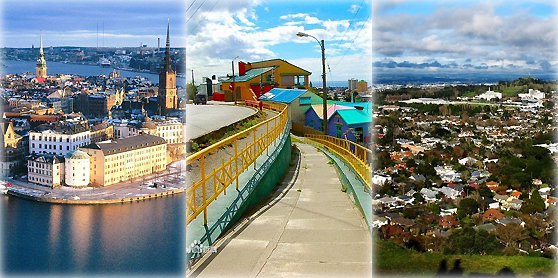Top 10 countries with smallest gender gap
 0 Comment(s)
0 Comment(s) Print
Print E-mail China.org.cn, October 25, 2013
E-mail China.org.cn, October 25, 2013
The world’s gender gaps narrowed slightly in 2013 on the back of definite if not universal improvements in economic equality and political participation between the sexes, according to the Global Gender Gap Report 2013, which is published Friday.
The eighth annual edition of the Report ranks 136 countries on their ability to close the gender gap in four key areas: economic participation and opportunity, political empowerment, health and survival, educational attainment, political participation and economic equality. Of the 133 countries that were measured in both 2012 and 2013, 86 actually improved their gender gap during this time. Overall, the Report finds Iceland the most advanced country in the world in terms of gender equality for the fifth year running.
Europe’s progress towards eliminating its gender gap is polarized, with countries from Northern and Western Europe presenting a stark contrast to those from the South and East. Spain comes in 30th, having closed 72% of its gender gap, France ranks 45th (70% closed) while Italy ranks 71st.
The Philippines is the highest ranking country in Asia, primarily due to success in health, education and economic participation. China stays in the same position as last year. India remains the lowest-ranked of the BRICS economies, even after gaining four places. Japan (105th) slips four places despite some improvements in the economic participation and opportunity subindex score. Japan is followed in the region by the Republic of Korea (111th).
Latin America’s leading nation when it comes to closing the gender gap is Nicaragua. At 10, it has now ranked in the top 10 for two years, largely on the back of a strong performance in terms of political empowerment. Cuba is next (15th), followed by Ecuador (25th). Mexico climbs 16 places to 68, due to increases in the number of female parliamentarians and the number of women in professional roles. Brazil holds firm at 62 despite a slight improvement in its overall score.
The Middle East and North Africa is the only region not to have improved its overall standing in 2013. The highest placed country in the region is the United Arab Emirates (109th), which has achieved parity in education. Nevertheless most countries in the region, including Bahrain (112th), Qatar (115th) and others are still failing to adequately capitalize on the investments in education through greater economic and political contributions from women.
A number of countries in Africa fare relatively well in this year’s Report, with Lesotho (16th), South Africa (17th), Burundi (22nd) and Mozambique (26th) all in the top 30. This is largely due to the participation of women in the workforce. Through this economic activity, women have greater access to income and economic decision-making, but are often present in low-skilled and low-paid sectors of the economy.
At the global level, the Report finds that in 2013, 96% of the health and survival gender gap has now been closed. It is the only one of the four pillars that has widened since the Report was first compiled in 2006. In terms of education, the global gender gap stands at 93%, with 25 countries having closed their gaps completely. The gender gaps for economic equality and political participation are only 60% and 21% closed respectively, although progress is being made in these areas, with political participation narrowing by almost 2% over the last year. In both developing and developed countries alike, relative to the numbers of women in tertiary education and in the workforce overall, women’s presence in economic leadership positions is limited.
Check out the top 10 countries on the 2013 list:
Nicaragua
2013 score: 0.7715
2012 rank: 9
2012 score: 0.7697
2011 rank: 27
2011 score: 0.7245
2010 rank: 30
2010 score: 0.7176








Go to Forum >>0 Comment(s)